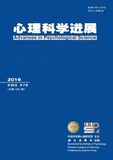Multi-sensory integration (MSI), also known as multi-modal integration, refers to a comprehensive process of selecting, connecting, unifying, and interpreting different sensory information. It involves coordination among various functional brain regions to achieve temporal binding of multiple sensory information and global predictive coding. On the other hand, the gamma rhythm oscillation (i.e., γ-band oscillation, at 30-100 Hz), as a type of neural oscillatory activity with low amplitude but high frequency, widely exists in different brain areas. Gamma rhythm oscillation mainly originates from the responses of glutamic acid of the supragranular layers to external stimuli, while this response is synchronously modulated by gamma-aminobutyric acid (GABA) interneurons. Recent research has shown that gamma rhythm oscillation plays a critical role in perceptual process due to its multiple functions in reflecting excitation/inhibition balance of interneurons, implementing temporal binding of multi-sensory information, and participating in global predictive coding via a cross-frequency coupling mechanism.
On the other hand, MSI deficits are typical comorbidities of autism spectrum disorders (ASD) and usually found in ASD children from 7 to 12 years of age in the growth and development period. The main clinical manifestation of MSI deficits in ASD is that the patients have difficulties in combining with multi-sensory information efficiently, and even show abnormal perception such as hyper- or hypo-sensitivity. Under laboratory conditions, the MSI deficits in ASD could be illustrated as lacking multisensory redundant target effect, wider but symmetrical temporal binding window, weaker ability of rapid audiovisual temporal recalibration, and few illusions in multi-sensory integration.
From the perspective of MSI deficits in ASD, this article systematically reviews previous theories in abnormal perception of ASD, which include the minicolumn pathology hypothesis (Casanova et al., 2002), the temporal binding deficit hypothesis (Brock et al., 2002), the predictive coding deficit hypothesis (Chan et al., 2016), and the cross-frequency coupling hypothesis (Kessler et al., 2016). We also analyze the physio-psychological mechanisms of ASD’s MSI deficits in combination with their abnormal gamma rhythm oscillations. We argue that abnormal gamma rhythm oscillations should be treated as an important biomarker of MSI deficits in ASD. Specifically, compared with healthy controls, children with ASD usually exhibit abnormal gamma oscillations caused by their structural and functional abnormalities in GABA interneurons (i.e., impaired minicolumn). In turn, the abnormalities in GABA interneurons indexed by gamma oscillations would interfere the functional gamma feedforward connectivity and then disrupt the normal temporal binding and predictive encoding, and thus eventually cause MSI deficits.
Although gamma rhythm oscillations in ASD have high correlations with their MSI deficits, it should be noted that the gamma rhythm oscillations might be one of the critical biomarkers of MSI deficits, but not the only one. Previous research has also shown that the alpha rhythm oscillations could also reflect the MSI deficits in ASD. In addition, interventions on abnormal gamma rhythm oscillations could improve clinical symptoms of MSI deficits in children with ASD, but may not able to fully resolve their multi-sensory integration problems. Therefore, as a biomarker of MSI deficits in ASD, gamma rhythm oscillations should to be used in caution. Nevertheless, given a causal link existed between gamma neural oscillations and MSI deficits in ASD, future research could use gamma rhythm neural oscillation as a biofeedback indicator, in combination with non-invasive and reversible intervention technologies (e.g., repetitive Transcranial Magnetic Stimulation, rTMS), to develop scientific and systematic clinical interventions.




